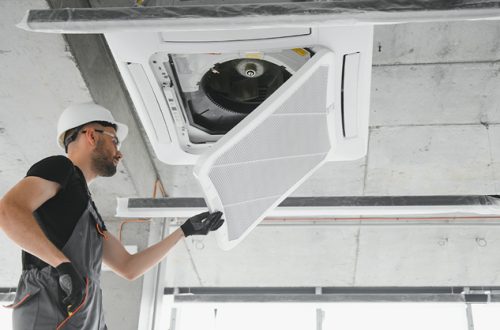
Cornelius L. Henderson was a civil engineer from Detroit who contributed to two history-making projects that connected the United States of America and Canada in the 1920s and 30s.
Henderson, born in the late 1880s, grew up in a time of rebellion and difficulty in America. The Progressive Era as it’s called was a time of economic, political, and social reform. The main goal of this period was to decentralize America’s wealth, which only belonged to a few elites.
Although activists were working to make big shifts in societal norms, one major social issue that wasn’t addressed was discrimination against Black people. Despite the rapid changes being seen in that time with justice for women, children, and the average consumer, African Americans were still subject to segregation. They couldn’t vote. They had limited access to healthcare and education. Housing was sparse and, in some states, lynchings were common.
In an era marked by progress hardships for Black Americans persisted and Henderson was no stranger to them.
Education
Cornelius L. Henderson was born to a family that prioritized higher education. His father, Reverend James Henderson, a prominent pastor in Detroit held a bachelor’s degree, two master’s degrees and two doctoral degrees. His brother was one of the first Black doctors in Detroit, and his sisters were educators.
He attended the University of Michigan for civil engineering, where he was the only Black student in the engineering department. The institutional prejudice against Black people at the university was obvious.
“He couldn’t sleep there, and he couldn’t eat there…His fellow white classmates wouldn’t study with him. He was basically ostracized,” said David L. Head, vice president of the Black Historic Sites Committee (BHSC) in an interview with the CBC.
Since Henderson wasn’t able to collaborate with his peers, he completed projects and studied on his own. Though sad, one of his professors said that this was of great benefit to Henderson’s engineering and architecture skills. Where his white counterparts were free to collaborate, Henderson had to become good enough to learn and complete the work on his own.
In 1911, he became the second-ever Black person to graduate from the engineering program at the University of Michigan.
A Job Across the Border
Despite this achievement, Henderson continued to face discrimination in the labour market. In an interview, Rashid Faisal, department chair for the College of Urban Education at Davenport University said that this was not uncommon for the time, since African Americans were all painted with the same brush, educated or not. Although there were many engineering jobs at the time, and Henderson was quite distinguished, the best offer he got was a janitorial position.
He didn’t give up though, and eventually, he ran into an old classmate from the University of Michigan who recognized him. Though they weren’t close he suggested that Henderson apply for the company that he worked for, the Canadian Bridge Company in Walkerville, which is now Windsor, Ontario. The Canadian Bridge Company manufactured steel trusses, and cables for bridge construction.
Henderson interviewed and landed the job. He initially worked as a draftsman in the drafting department. By 1928, Henderson was a structural design engineer.
He spent 47 years with the Canadian Bridge Company and worked on groundbreaking projects like the Ambassador Bridge (Canadian side), and the Detroit-Windsor Tunnel.
The Ambassador Bridge
The Ambassador Bridge is a landmark suspension bridge that goes from Detroit, Michigan to Windsor, Ontario across the Detroit River. When it opened in 1929 it was the longest suspension bridge ever built, spanning 1,850 feet. When it opened, people on both sides of the bridge lined up overnight to cross it.
Before its construction, the Detroit River, connected to Lake Eerie, was a big transportation route. Unfortunately, the river was narrow, and when ice formed on it, shipping traffic was completely blocked, and trade facilitated by ferries and freight carriers took a hit.
It is now the busiest border crossing in North America with more than 25 percent of merchandise trade passing over the bridge.
Henderson was responsible for designing the steel trusses that the Canadian side used to build the bridge.

The Detroit Windsor Tunnel
His work connecting Detroit and Windsor didn’t stop at the suspension bridge. Henderson also contributed to the Detroit Windsor Tunnel, an underground autoroute that connected the two cities. This was considered a huge engineering feat at the time. Opening in 1930, It was the first underground vehicle tunnel in the world.
Henderson oversaw the construction of the steel tubes in which the 5,160-foot-long Detroit-Windsor Tunnel sits.

Image Source: Detroit Free Press
Other Important Projects Henderson Worked On
- Thousand Islands Bridge – Ivy Lea, Ontario to Collins Landing, New York across the St. Lawrence River.
- Quebec Bridge – Quebec City, Quebec to Lévis, Quebec across the St. Lawrence River
- Homer Lift Bridge – Welland, Ontario
- Commercial buildings for the Dominion Forge & Stamping Company; Dominion Iron & Steel Company; General Motors Corporation of Canada; Ford Motor Company of Canada; Chrysler Corporation; and General Electric Company.
- Canadian Supreme Court Building – Ottawa, Ontario
- Hangars at the Royal Canadian Air Force Station Trenton
- Royal Canadian Mounted Police headquarters – Ottawa, ON
Now, the Essex County Black Historical Society is working to have the life of Cornelius L. Henderson memorialized on both sides of the border.
This Black History Month we are honoured to celebrate the engineering accomplishments of Cornelius L Henderson, a man who spent much of his career dedicated to Canadian infrastructure projects. Henderson held on to the value of education and persisted in the face of prejudice. The result of his hard work continues to benefit Canadians today.
We acknowledge that there are still barriers for Black engineers because of persisting societal biases. At OSPE, we believe that a diverse and inclusive engineering community produces better outcomes. It is not just the right thing to do, it delivers results.




Leave a Comment